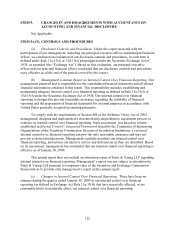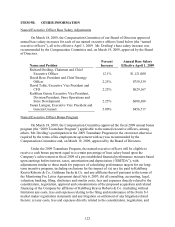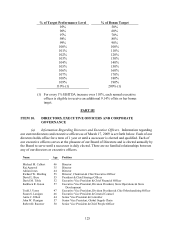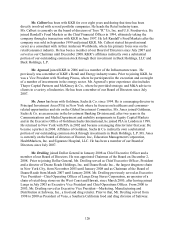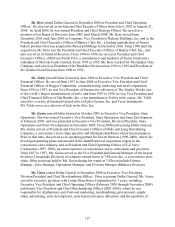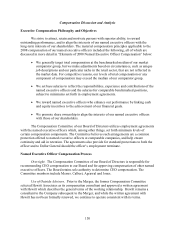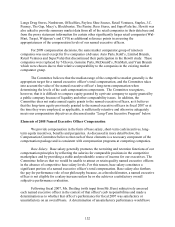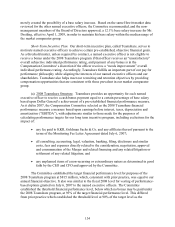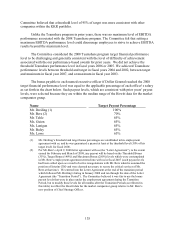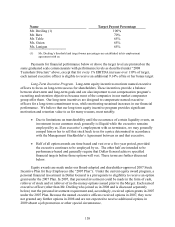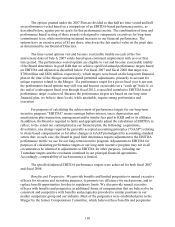Dollar General 2008 Annual Report Download - page 134
Download and view the complete annual report
Please find page 134 of the 2008 Dollar General annual report below. You can navigate through the pages in the report by either clicking on the pages listed below, or by using the keyword search tool below to find specific information within the annual report.132
Longs Drug Stores, Nordstrom, OfficeMax, Payless Shoe Source, Retail Ventures, Staples, J.C.
Penney, The Gap, Macy’ s, Blockbuster, The Pantry, Ross Stores, and SuperValu Inc. Hewitt was
also asked to provide summary market data from all of the retail companies in their data base and
from the proxy statement information for certain other significantly larger retail companies (Wal-
Mart, Target, Walgreen’ s and CVS) as additional reference points in assessing the
appropriateness of the compensation levels of our named executive officers.
For 2009 compensation decisions, the same market comparator group of nineteen
companies was used except for five companies (Advance Auto Parts, Kohl’ s, Limited Brands,
Retail Ventures and SuperValu) that discontinued their participation in the Hewitt study. These
companies were replaced by 7-Eleven, Genuine Parts, McDonald’ s, PetsMart, and Yum Brands
which were chosen due to their relative comparability to the companies in the existing market
comparator group.
The Committee believes that the median range of the competitive market generally is the
appropriate target for a named executive officer’ s total compensation, and the Committee takes
into account the value of the named executive officer’ s long-term compensation when
determining the levels of the cash compensation components. The Committee recognizes,
however, that it is difficult to compare equity granted by a private company to equity granted by
a public company because of liquidity and other comparability issues. In addition, the
Committee does not make annual equity grants to the named executive officers, as it believes
that the long-term equity previously granted to the named executive officers in fiscal 2007 or at
the time they were employed, as applicable, is sufficiently retentive and otherwise adequately
meets our compensation objectives as discussed under “Long-Term Incentive Program” below.
Elements of 2008 Named Executive Officer Compensation
We provide compensation in the form of base salary, short-term cash incentives, long-
term equity incentives, benefits and perquisites. As discussed in more detail below, the
Compensation Committee believes that each of these elements is a necessary component of the
compensation package and is consistent with compensation programs at competing companies.
Base Salary. Base salary generally promotes the recruiting and retention functions of our
compensation principles by reflecting the salaries for comparable positions in the competitive
marketplace and by providing a stable and predictable source of income for our executives. The
Committee believes that we would be unable to attract or retain quality named executive officers
in the absence of competitive base salary levels. For this reason, base salary constitutes a
significant portion of a named executive officer’ s total compensation. Base salary also furthers
the pay for performance role of our philosophy because, as a threshold matter, a named executive
officer is not eligible for a salary increase unless he or she achieves a satisfactory overall
subjective performance evaluation.
Following fiscal 2007, Mr. Dreiling (with input from Mr. Bere) subjectively assessed
each named executive officer in the context of that officer’ s job responsibilities and made a
determination as to whether that officer’ s performance for fiscal 2007 was satisfactory or
unsatisfactory on an overall basis. A determination of unsatisfactory performance would have


